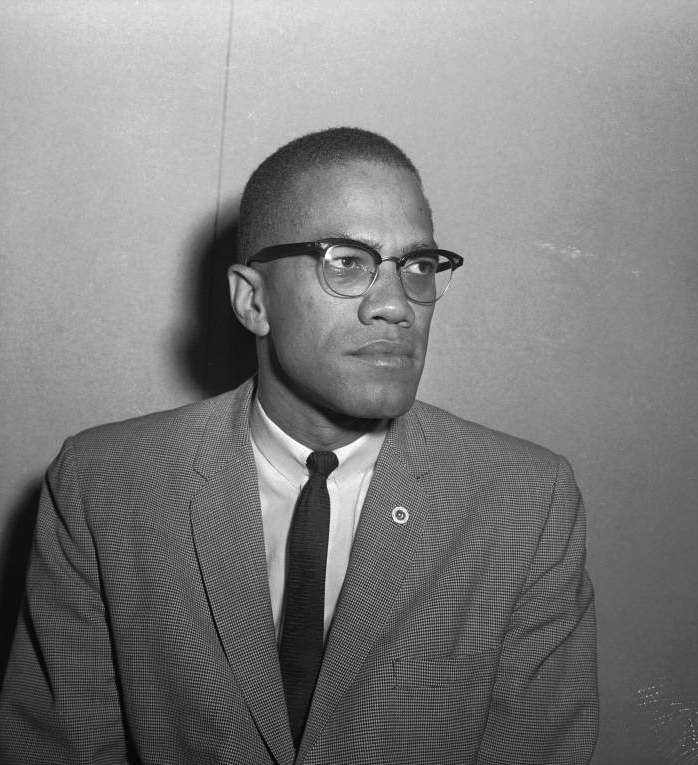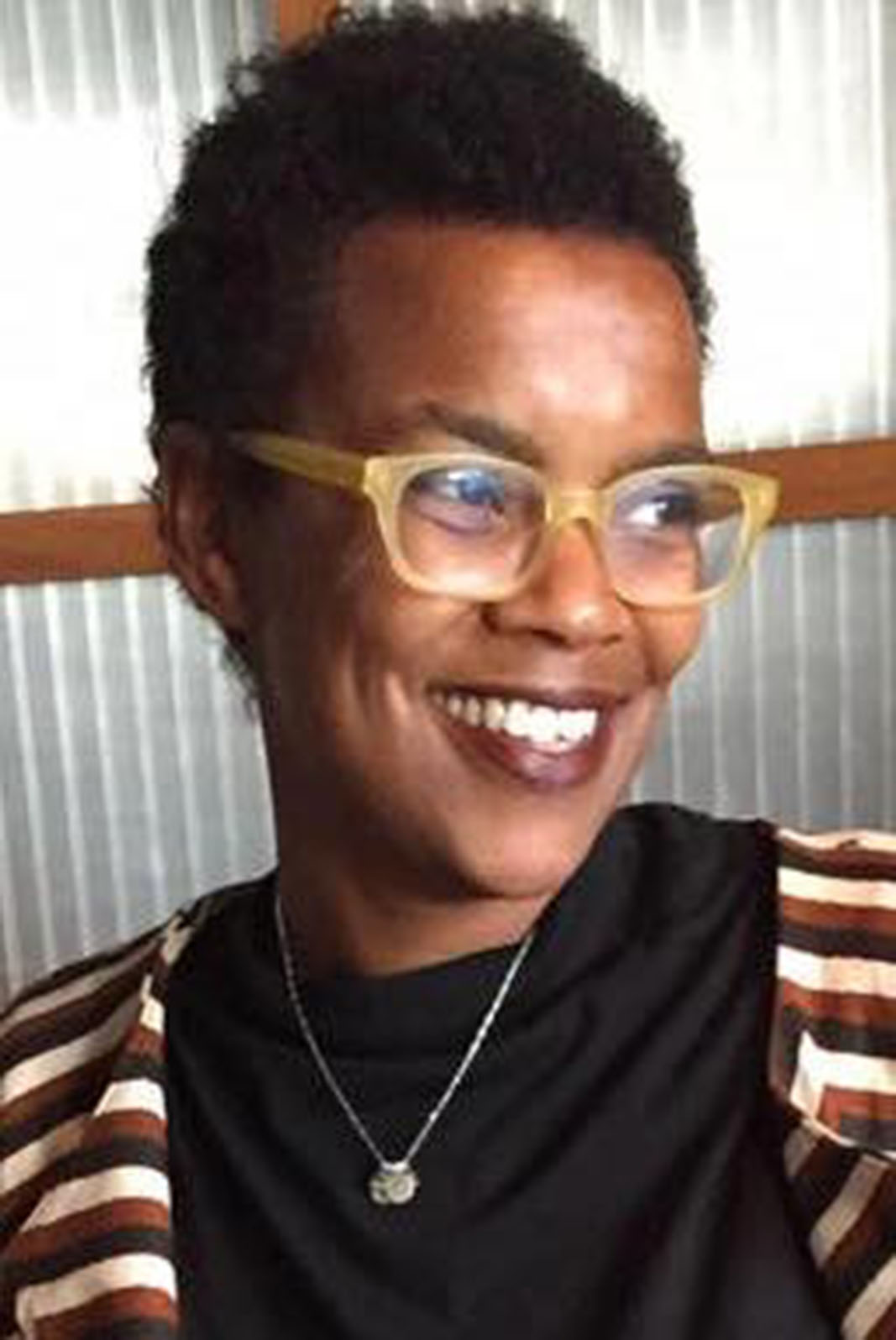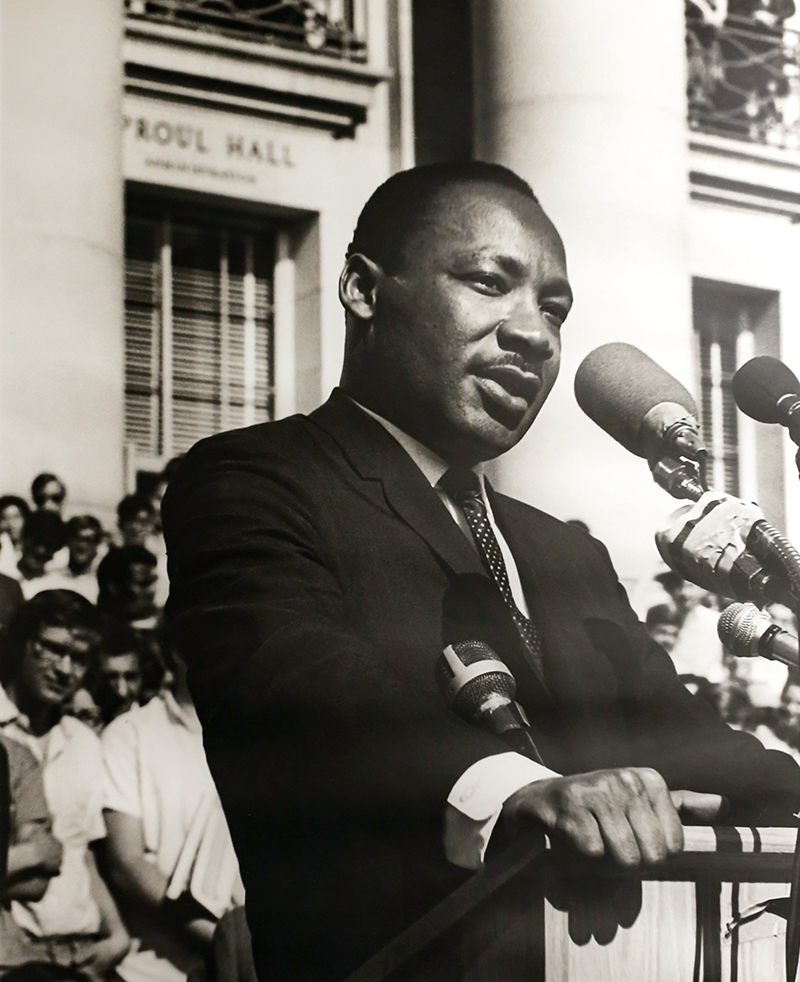It was the late 1960s, and J. Edgar Hoover smelled trouble. The status quo — hallowed by hate, sanctioned by Jim Crow — was beginning to crack.
Behind the scenes, Hoover’s Federal Bureau of Investigation was keeping watch. In 1967, the FBI quietly unleashed a covert surveillance operation targeting “subversive” civil rights groups and Black leaders, including the Black Panther Party, Martin Luther King Jr., Elijah Muhammad, Malcolm X, and many others.

The objective, according to an FBI memo: to “expose, disrupt, misdirect, discredit, or otherwise neutralize” the radical fight for Black rights — and Black power.
Details of that sabotage plaster internal FBI records, with thousands of pages scattered across a medley of databases. Now, the UC Berkeley Library is working to put those pieces together.
In May, just before the movement for Black lives cascaded over the planet, the Library acquired a digital database of FBI records on the surveillance of African Americans throughout the 20th century, expanding the trove of federal records the Library has assembled over the years. Today, the materials provide not only a window into the FBI’s past abuse, but also an unplanned guide for the Black activists demanding racial justice again, now 50 years later.
“These documents ... reveal and confirm the kind of root investment in anti-Blackness and quelling dissent that has long been part of our government structure,” says Leigh Raiford, a professor of African American studies at UC Berkeley. “We can only imagine the extent to which the current administration, and the current FBI, is working to discredit, disrupt, and destroy Black Lives Matter and other movements.
“I’m hoping that a new generation of researchers will learn new lessons for how to outmaneuver these attempts.”
‘A double evil’
One of the biggest lessons contained in the documents is abundantly clear: Whatever you do, don’t let them think you’re a communist.
For Hoover, an Ahab-type character in pursuit of his cursed whale, the mere whiff of such leanings could trigger the dirtiest of tricks in the FBI’s arsenal.
“No holds were barred,” said assistant FBI director William C. Sullivan in his testimony for the U.S. Senate’s Church Committee, as recorded in documents held by the Library and freely available on the digital repository HathiTrust. “We have used (these techniques) against Soviet agents. They have used (them) against us.”
“We did not differentiate,” Sullivan said. “This is a rough, tough business.”
The FBI’s surveillance of African Americans and Black rights organizations — whom the FBI called “Black Extremists” or “Black Nationalist Hate Groups” — grew out of the bureau’s larger espionage operation known as COINTELPRO, the now infamous program launched in 1956 to snuff out communism in the United States. (Other radical groups, including socialists and anti-war activists, were soon added to the agenda.)
In Hoover’s view, it went something like this: There were communists in the civil rights movement. Never mind that there were Black people fighting for their lives.
“The threat of communism became a way in which to undermine Black radical movements,” says Ula Taylor, a campus professor of African American studies who used underground newspapers held by the Library and FBI surveillance records on the Nation of Islam for her book The Promise of Patriarchy: Women and the Nation of Islam. “All of these Black organizations understood that the way in which the federal government could take down their organization was by painting them red.”

“It was like a double evil,” notes Jesse Silva, scholarly resources strategy and federal government information librarian, who helped acquire the FBI records. “Communists are evil. Black nationalism is evil. Put them together — it’s the ultimate evil.
“They tried to throw in whatever they could to make it stick,” he adds. “Looking at it now, it doesn’t make any sense.”
In Raiford’s view, that story spinning looks something like the political battle now taking place over the Black Lives Matter movement — and whether it is violent or not. Raiford points to a recent clip from Fox News featuring a warning that “if you disagree with BLM, that BLM will send protesters to your home,” as she recalls.
“The FBI understood that, too,” says Raiford, who used FBI records for her research on social movements and visual culture. “They understood that the civil rights movement was winning people’s hearts and minds through the circulation of photographs and videos of nonviolent, peaceful protests.
“We’re seeing that right now,” she continues. “So much of the presidential race conversation is happening over the question: Are these protests peaceful or not?”
Fanning the flames
One of the primary targets for COINTELPRO’s fear-mongering was the Black Panther Party, the revolutionary Black rights group founded in Oakland in 1966. Just two years later, Hoover called the Panthers “the greatest threat to the internal security of the country.”
The FBI responded in full force, spreading ominous rumors to incite the group to violence, and even murder. As the Library’s documents show, when conflict arose between the Black Panther Party and the US Organization, another Black Power group, FBI officials directed field offices to “exploit all avenues of creating further dissension” and to submit regular reports on “imaginative and hard-hitting counterintelligence measures aimed at crippling the BPP.”
One “imaginative” suggestion? Sending a fake letter from US to the Black Panthers warning that US planned to “ambush leaders of the BPP in Los Angeles,” as noted in a 1968 memo in the Library’s database.
“It’s difficult when you have some of this vitriol and nastiness,” Silva says. “But we want to collect that, because that’s how society is going to grow — by shining a light on this and saying, ‘Is this what we want to be, or do we want something better?’”

The new collection, acquired from Gale, an educational publisher and online database, contains not only the COINTELPRO records, but also the surveillance files of many important Black figures and organizations of the day — including Thurgood Marshall, Marcus Garvey, the NAACP, and many others.
Additional records, including Hoover’s confidential documents and FBI files on Martin Luther King Jr. and the Student Nonviolent Coordinating Committee, or SNCC, are also available through the Library via ProQuest, the massive online repository.
(The California Digital Library, which licenses content for users across the University of California, is also currently trialing ProQuest’s extensive Civil Rights and the Black Freedom Struggle collection, which holds additional FBI records and the personal papers of many civil rights groups and activists.)
Details of the FBI’s harassment of the Panthers and other Black groups are especially shocking given the justification for its illegal acts: to prevent violence.
As Black rights activist Stokely Carmichael told a packed Greek Theatre during a campus visit in 1966, “This country is too hypocritical — and we cannot adjust ourselves to its hypocrisy.”
“White people beat up Black people every day — don’t nobody talk about nonviolence,” continued Carmichael, then the leader of SNCC, a civil rights organization that was also heavily surveilled. “But as soon as Black people start to move, the double standard comes into being.
“You can't defend yourself — that’s what you’re saying.”
Staying one step ahead
Fast-forward to 2020, and the hypocrisy is still rampant. COINTELPRO operations officially ended in the ’70s, when an FBI office was burglarized and details of the program were exposed to the public.
But its legacy is alive and well. In 2017, amid widespread Black Lives Matter protests, a leaked report from the FBI’s counterterrorism unit defined the security threat posed by so-called Black Identity Extremists — a name that, for many, echoes the inflammatory labels given to civil rights groups during the era of COINTELPRO.
In the 2017 report, FBI officials warn that “perceptions of police brutality against African Americans” were likely to spur lethal violence against law enforcement.
Last year, leaked documents obtained by the left-wing news group The Young Turks exposed an FBI operation titled IRON FIST, designed to “proactively address this priority domestic terrorism target by focusing FBI operations via enhanced intelligence collection efforts” — including the use of undercover agents.
“We know the extent to which the government has worked to destroy (Black rights) organizations and is continuing to do that work — as we’re seeing with the movement for Black lives, writing them off as terrorist organizations,” Raiford says.
But the fight looks a little different this time around, she says. With detailed records of the FBI’s abuses on full display, a new generation of Black activists can stay one step ahead.
“One of the things that makes Black Lives Matter so fascinating and so enduring over these last few years is it is decentralized,” Raiford says, pointing to the FBI’s past assailment of figures such as King. “You can’t necessarily identify a specific leader of Black Lives Matter, so a single person can’t be identified, targeted, and neutralized.
“The movement becomes resilient.”